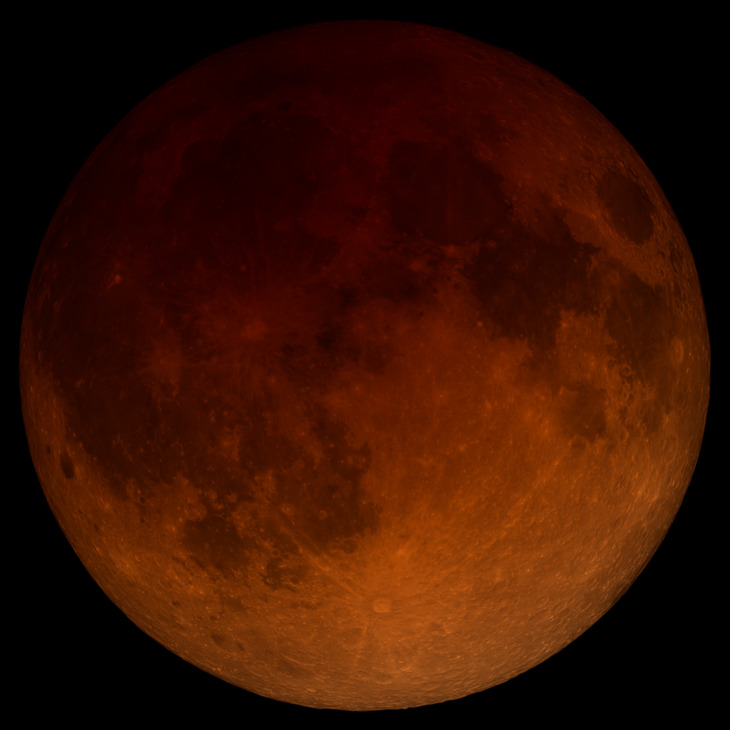On Sunday night, May 15, a gorgeous total eclipse of the Moon will sweep across the continent. It’s especially welcome since it’s been years since we’ve had a true total lunar eclipse. Get the “real” start time and more viewing tips.
Advertisement
For the last couple of years, every lunar eclipse has been of the penumbral type, meaning the Moon failed to even momentarily touch the edge of Earth’s visible shadow.
That strange voo-doo word “penumbra” often makes television anchors mess up their eclipse announcements. Consulting a reference ahead of time, they think the action starts with the penumbral phase at 9:30 PM.
The Real Start Time
So our initial important tip is that the real “start” time—when something happens that you can actually see—is when the full moon first contacts the dark visible edge of our planet’s shadow. That will occur at 10:28 Sunday evening, Eastern Daylight Time.
So, once again, 10:28 is when the action begins. The Moon is the only body that moves through space its own width each hour. So it takes that long, one hour, to fully enter Earth’s shadow. As a total eclipse, the Moon will pass through the center of the Earth’s shadow, and will be completely eclipsed about one hour later.
Watch the Shapes of a Total Eclipse
During this time, from 10:28 until 11:29 EDT, the moon goes through a bizarre series of odd shapes. Some resemble lunar phases but most are much stranger than that.
Note: Lunar eclipses are safe to view with the unaided eye. Binoculars and telescopes enhance the view, but aren’t required.
Earth’s shadow tapers like a chopstick to roughly half its original width at the moon’s distance, making a lunar eclipse a geometric wonderland involving different size curves, which produce their weirdest dreamlike effect when Earth’s shadow falls near the Moon’s outer edge at roughly 11:15 PM. So that’s the don’t-miss period Sunday, the time of Maximum Strangeness: 11:15 PM to 11:30 PM Eastern.
Totality starts just before 11:30 PM and lasts about an hour and a quarter. But unlike a solar eclipse whose totality displays many marvelous phenomena, nothing really occurs during lunar totality except the Full Moon turns coppery red. And the countless faint stars of Libra masked by the Full Moon during the night’s first half now fill the sky. So although a total lunar eclipse is nowhere near as life-altering as the total solar variety, it’s still very worth staying up to see!
Specific Times of Total Lunar Eclipse (EDT)
- Partial eclipse begins at 10:27 PM May 15
- Totality begins at 11:29 PM EDT
- Totality ends at 12:54 a.m. EDT
- Partial eclipse ends at 1:55 AM EDT (May 16)
Visit the NASA visualization for Eastern, Central, Mountain, and Pacific Daylight Time zones, as well as UTC.

Image credit: NASA
Supermoon Brings Higher Tides
The May 15 Moon is also a “supermoon” because the Moon crests near “perigee” which is the time of the month when the Moon is nearest to Earth. Technically, most people can’t really tell that the Moon is larger than a normal Moon but the Moon will certainly appear large in the night sky. Learn more about supermoons.
What’s more noticeable are the higher-than-usual tides. In the day or two after the supermoon, people who live along a coastline can expect extra high tides. We astronmers call these “perigean spring tides” though you may hear “supermoon tides” in the media.
Learn more about the Full Moon of May. See the Almanac Guide to the Full Flower Moon.










Comments